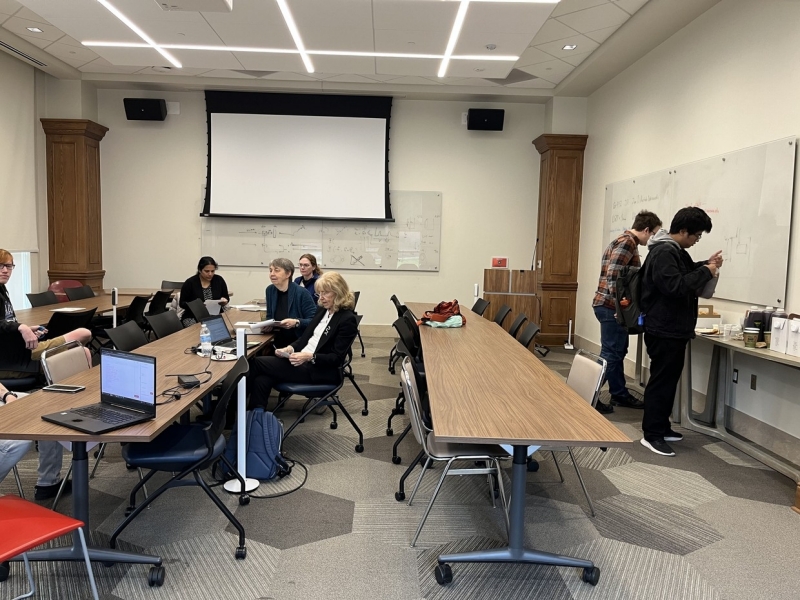
On March 8th and 9th, the Homer L. Dodge Department of Physics & Astronomy participated in an APS Improving the Climate for Women Site Visit. This program, run by the American Physical Society, sends 4-person groups of external visitors to physics departments around the country with the goal of improving the department climate for women and other marginalized groups. It is overseen by the APS Committee on the Status of Women in Physics and the APS Committee on Minorities. Our department requested this visit nearly 3 years ago, but it was delayed by the COVID-19 pandemic as well as general oversubscription to the program.
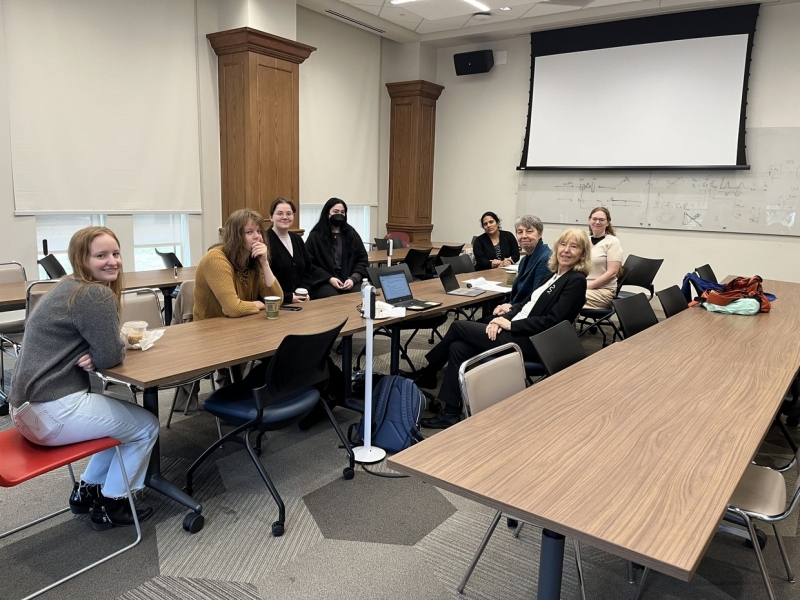
OU’s visit panel was headed by Mary Hall Reno (chair of University of Iowa’s Physics department) and also included Norah Berrah (professor and former chair of University of Connecticut Physics department), Laura McCullough (professor former chair of University of Wisconsin-Stout Physics department), and Sowjanya Gollapinni (senior scientist at Los Alamos National Laboratory). Over the course of two days, these visitors had open discussion meetings with interested groups of undergraduate students, graduate students, postdocs, staff, lecturers, research scientists, untenured faculty and tenured faculty, as well as member of the LGBTQ+ community. Based on these discussions as well as a confidential survey distributed prior to the site visit, the site visit panel is currently preparing a report assessing our department’s climate, including its strengths and shortcomings, as well as recommendations for improvement.
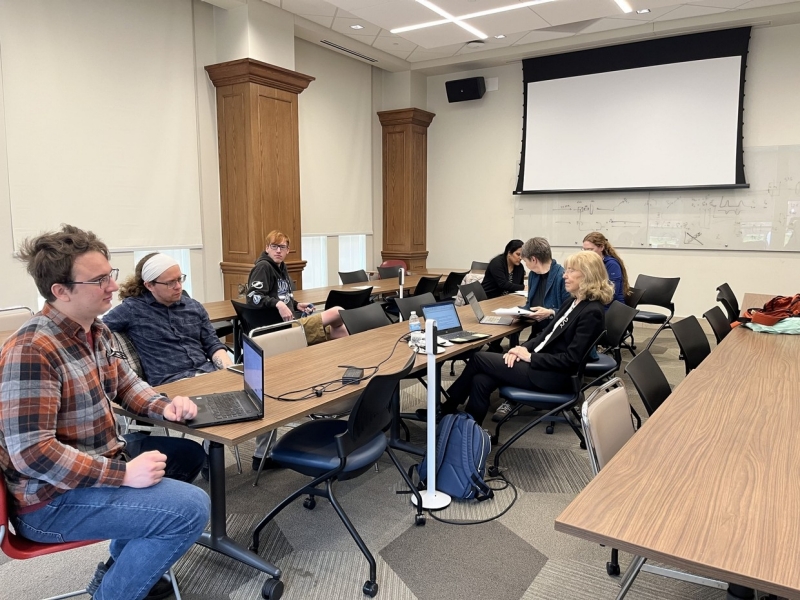
Upon receipt of the visit panel’s report, our department is expected to develop an action plan within 3 months to respond to the site visit report. The development of this action plan will be led by our department’s site visit team, which includes Phil Gutierrez, Nathan Kaib, Joe Tischler, Doerte Blume, Dakotah Martinez, and Cosme Aquino Ovelar. The site visit panel will then consult with our department one year from now to assess the impact of their visit and the department’s action plan.
On February 6, the Women in Physics group of the the Homer L. Dodge Department of Physics Astronomy hosted Prof. Maren Mossman from the University of San Diego.
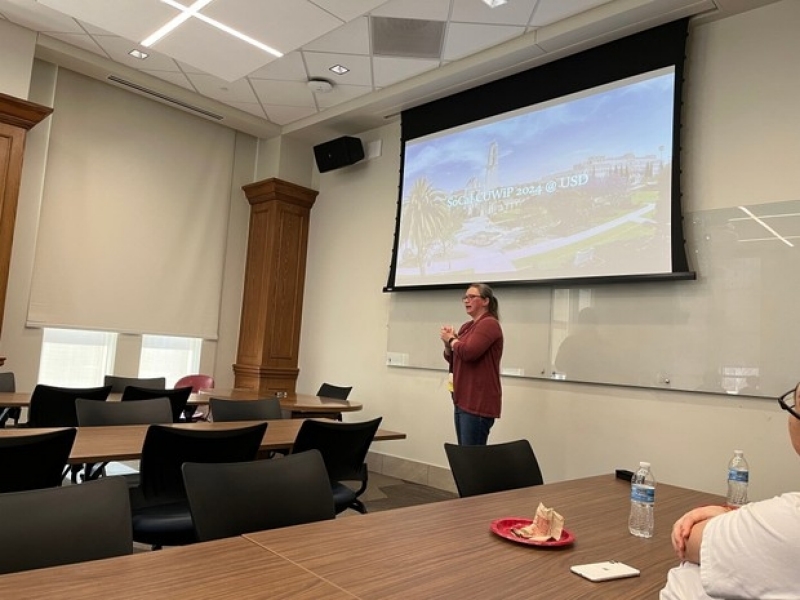
Maren presented during the Professional Development Series Luncheon on “A path to community building in higher-education physics departments”. It was a great pleasure to host Maren and to discuss community building, departmental efforts, DEI, and physics.
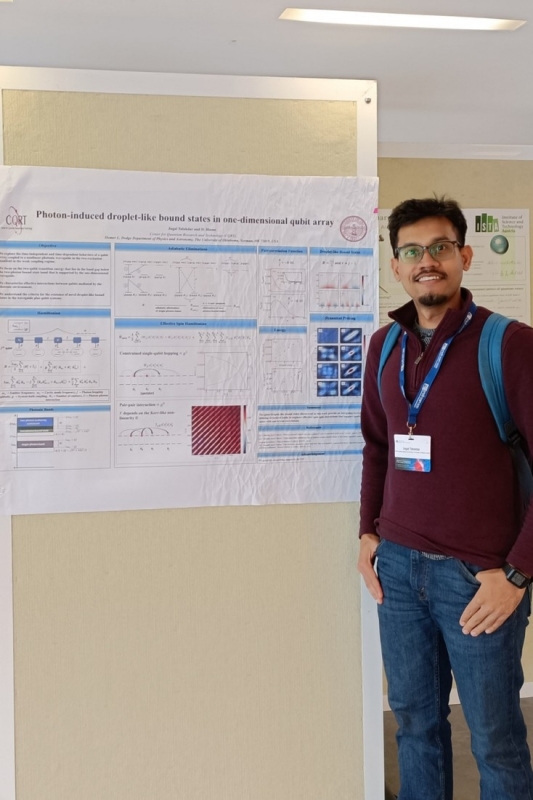
Jugal Talukdar presented his research work at the Minerva-Gentner Symposium on coherent manipulation of few-body complexes (https://www.weizmann.ac.il/conferences/FBC2023/) at the Weizmann Institute of Science, Rehovot, Israel (20-23 February, 2023).
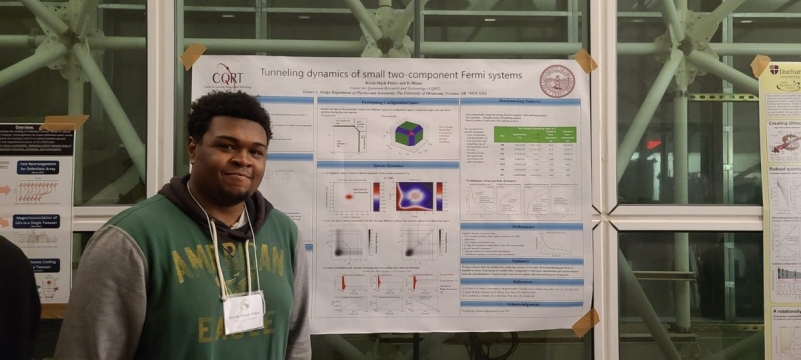
Kevin Mack-Fisher presented his research work at the ITAMP/B2 Winter Graduate School 2023 "Cold Molecules for Quantum Information Technologies and Fundamental Physics" (https://lweb.cfa.harvard.edu/itamp-event/winter-graduate-school-2023-cold-molecules-quantum-information-technologies-and) in Arizona (19-25 February, 2023).
The CQRT continues to produce high impact research with a number of important recent papers published, several recent funding announcements, and numerous conference presentations given by center members.
On the publications front, Dr. Lewis-Swan worked with collaborators from JILA at CU Boulder and the Institute of Quantum Optics and Information in Vienna to take “a quantum snapshot of the state of a single atom” recently published in Nature Physics https://www.nature.com/articles/s41567-022-01911-6. Dr. Lewis-Swan was able to work with the experimental groups to build a representation of the quantum state of the atom in terms of a Wigner function, which can be thought of as quantum probability distribution for finding an atom with a given velocity and position.
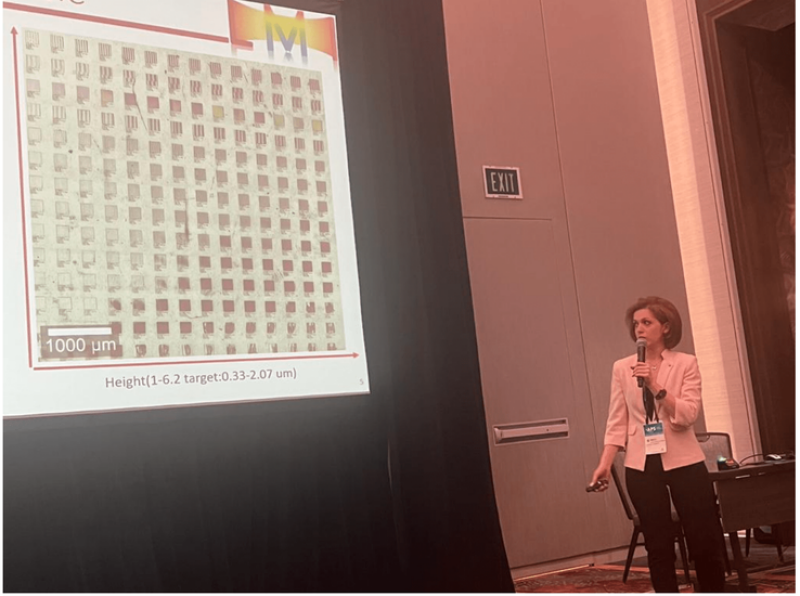
From Arne Schwettmannn's group a new paper: S. Zhong, H. G. Ooi, S. Prajapati, Q. Zhang, and A. Schwettmann, "Seeded spin-mixing interferometry with long-time evolution in microwave-dressed spinor Bose-Einstein condensates," J. Phys. B: At. Mol. Opt. Phys. 56 085502 (2023).
Bihui Zhu has a new paper coming in Nature: Many-body cavity quantum electrodynamics with driven inhomogeneous emitters, Mi Lei, Rikuto Fukumori, Jake Rochman, Bihui Zhu, Manuel Endres, Joonhee Choi, Andrei Faraon.
Bihui Zhu have a talk at the APS March meeting: "Measuring correlations in an ensemble of lattice-trapped dipolar atoms."
In another recent high-profile publication, the group of Professor Sellers published an article in Nature Energy (https://www.nature.com/articles/s41560-022-01189-1) with collaborators at the National Renewable Energy Laboratory and the University of North Texas to develop new radiation hard materials for next generation space power applications. The Sellers-group has been performing pioneering work in this area over the last few years and this article is another important contribution to this emerging field in space PV.
In other recent news, Professors Tischler, Santos, and Furis have secured large Federal grants to support new recent themes in the CQRT. Tischler and Santos from the Physics and Astronomy Department at OU in collaboration with Amethyst Research Incorporated (ARI) were granted a Phase II Small Business Technology Transfer (STTR) from the Office of the Secretary of Defense for a total of $1,700,000.00. OU and ARI are working together to develop tunable epsilon-near-zero tunneling diodes in the infrared region to be used as detectors and light sources. This effort addresses defense, and global security challenges in line with The Oklahoma Aerospace and Defense Innovation Institute (OADII) while being supported by the two cross-cutting foundations, Center for Quantum Research and Technology (CQRT) and Center for Optimal Materials for Emerging Technologies (COMET).
Professor Furis was awarded an NFS PIRE, which is an international collaboration with groups in Osaka and Yamagata in Japan. Professor Furis who is the lead PI on this large effort involving several faculty across OU, and partners at the University of Vermont, will work on research and education themes that investigate “excitonic soft matter for clean energy.”
Finally, the beginning of March saw the annual APS meeting held in this year Las Vegas NV. The event was strongly attended by the CMP group including members from the groups of Mullen, Santos, Tischler, and Uchoa. The picture attached show one such presentation from Nazli Rasouli Sarabi from the Tischler-group who presented her work on light matter interaction in advanced photonic structures.
In January, the OU astronomy group welcomed its first Dodge Postdoctoral Fellow to the department, Dr. Emilia Järvelä. Emilia’s main research interest is active galactic nuclei (AGN), especially a class of unevolved AGN called narrow-line Seyfert 1 (NLS1) galaxies. She started studying them in her master’s thesis, and continued the research in her doctoral thesis. Emilia graduated as a Doctor of Science (Tech.) in 2018 from the Aalto University Metsähovi Radio Observatory (Finland). After that, she moved to California for her first postdoctoral fellowship in the University of California, Santa Barbara (UCSB).
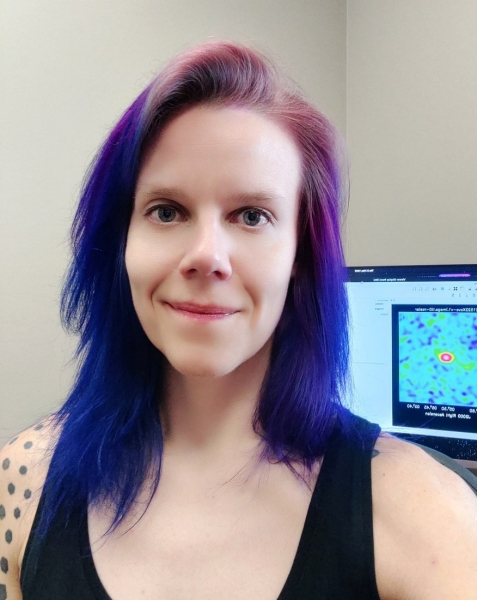
Emilia’s stay in the UCSB was a bit shorter than planned, since she obtained the European Space Agency (ESA) research fellowship at ESA's European Space Astronomy Centre (Spain), and moved to Spain just before the pandemic. After spending three years in ESA, she started as a Dodge Family Prize Fellow here at OU. Emilia’s roots are in radio astronomy but have also strayed to optical, near-infrared, X-ray, and gamma-ray astronomy along the way, so she has adopted a very panchromatic approach. Her research aims to understand the nature and evolution of the narrow-line Seyfert 1 galaxy population better, and to figure out how they fit into the grand AGN scheme. In addition to scientific work, she is also a strong advocate for diversity in STEM, promoting DEI (diversity, equity, inclusion) matters and creating a safe and inclusive working environment, where diversity is seen as an opportunity, not as a threat.
This year the astronomy group significantly increased its access to observing resources and datasets. Our group’s share of time on the 3.5-meter Apache Point Observatory (APO) has been increased by 70%, and OU researchers now have a 10.65% share in all available APO observing time. In addition, Xinyu Dai is now a member in the Sloan Digital Sky Survey-V collaboration. This is an all-sky, multi-epoch spectroscopic survey that will yield optical and infrared spectra of over 6 million objects during its five-year lifetime. Xinyu Dai also recently won a Bush Lectureship from the department.
A recently submitted paper by Mukremin Kilic and OU graduate students Adam Moss and Gracyn Jewett discovered the most massive pulsating white dwarf known with a mass of 1.31 solar-masses (assuming a carbon/oxygen core composition). The discovery was made with the APO 3.5-m telescope and confirmed with the Gemini South Observatory. Evolutionary models predict that the interior of this star is over 99% crystallized. The team is currently trying to obtain additional observations to perform asteroseismology on this exciting system and probe its interior structure. The paper reference is in review at the Monthly Notices of the Royal Astronomical Society. Muk Kilic also recently won a Bush Lectureship from the department.
Nathan Kaib is the Principal Investigator on a newly awarded grant from the NASA Emerging Worlds program for nearly $300,000. This 3-year grant will study how the mutual orbits of binary Kuiper belt object are widened during an orbital instability thought to have occurred among the giant planets early in the solar system’s history. In addition, Kaib is a co-investigator on another newly awarded grant from the same funding program. This grant, led by former OU graduate student, Matt Clement, will study how this same giant planet instability affected the formation and stability of the planets’ systems of satellites.
An all-OU analysis involving the search for vector-like tau leptons was recently highlighted by the ATLAS collaboration at CERN. The authors included Joe Muse (dissertation), Marija Marjanovic, Phil Gutierrez, Daniel Wilbern, and Brad Abbott. More details are available here: https://atlas.cern/Updates/Briefing/Exotic-Vectorlike-Taus. The highlight includes a second search for excited tau leptons, which the OU group did not participate in directly.
On the theory front, Kuver Sinha recently served as a sectional editor in the community review "Detection of early-universe gravitational-wave signatures and fundamental physics" published in the journal General Relativity and Gravitation. Along with student TJ Gehrman and postdoc Tao Xu, he published the paper "Baryogenesis, primordial black holes and MHz–GHz gravitational waves" in the Journal of Cosmology and Astroparticle Physics.